It may sound surprising, but monday.com, we rely on a project management style that originates from software engineering.
And if you’ve ever worked on a software project, you’ll know why.
Highly unpredictable timelines, constantly changing requirements and markets, and a group of engineers who think they know how to manage themselves — even if they don’t.
This article will highlight the right approach to project management in software engineering, how it differs from regular project management, and the best methodologies for different use cases.
What makes project management in software engineering different?
Software engineering projects don’t usually involve multiple job site locations, physical products, or big supply chains, so they might sound easier to manage.
Unfortunately, it’s not that simple. The sheer unpredictability of project scale and future requirements makes it hard to plan accurately.
Let’s take a look at 4 areas of software engineering projects that make them uniquely challenging:
High degree of unpredictability makes it hard to plan ahead
Software projects are kind of like home renovation projects. You think it’ll be done in 3 weeks, but then you find bugs, black mold, a roof leak, water damage, and other non-ideal surprises.
By the time it’s over, the original timeline and budget have gone out the window.
With software, it’s bugs — digital this time — and other unforeseen issues that will ruin your project manager’s day. Again, a software project schedule rarely hits the mark.
According to PMI’s 2020 report, the most common reason for project failure is not adapting to change.
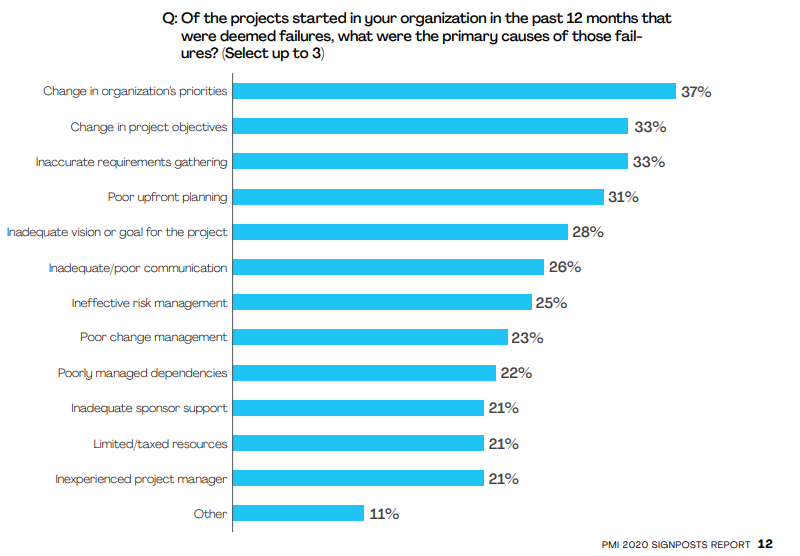
So for a software project, that’s an even bigger challenge.
No physical products or supply chain
Unlike traditional engineering, construction, and manufacturing projects, software engineering doesn’t involve physical products, FDA approval, a supply chain, or a designated location.
Your teams can collaborate from anywhere and don’t have to jump through rigorous hoops before user testing a new feature or product.
Since this is the same for your competitors, most markets move at a blistering pace. Even in smaller markets, there are startups and software launches every few months.
Just look at the project management software market. Hundreds of options and more popping up every year.
More autonomy
Developers expect a certain level of autonomy. Managers even use it as a technique to keep their workers motivated and productive.
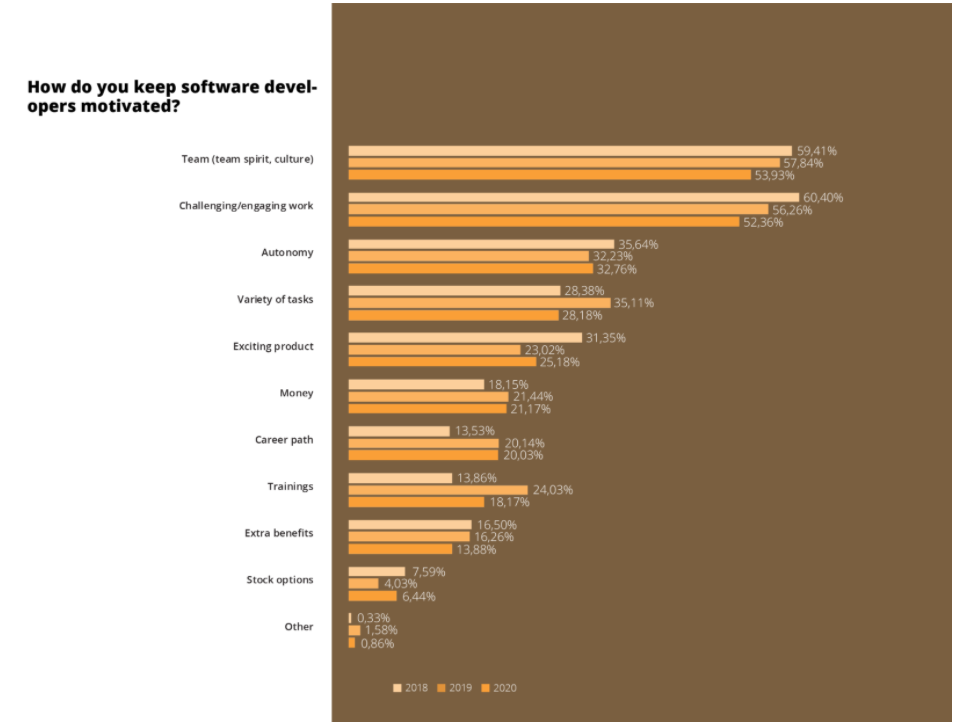
Plus, if the manager or team lead tried to break down every logical step and minuscule task, they’d need 80-hour days — days, not weeks — to get everything done.
A lot of remote workers
Because working on digital projects means you can access and deliver work from anywhere, most are taking advantage. In 2019, 86% of IT developers reported working at least partially remote.
If you want to hire top software engineers, you need to offer some flexibility.
Many of our teams are fully remote, and we know that it comes with its own set of challenges, in addition to the benefits of lower overhead, and better work-life balance for employees.
Top project management methodologies and frameworks for software engineering
Agile project management has become the clear “fan favorite” methodology within the software and technology sectors.
According to Gartner, 87% of companies used Agile for at least some of their app development projects in 2019.
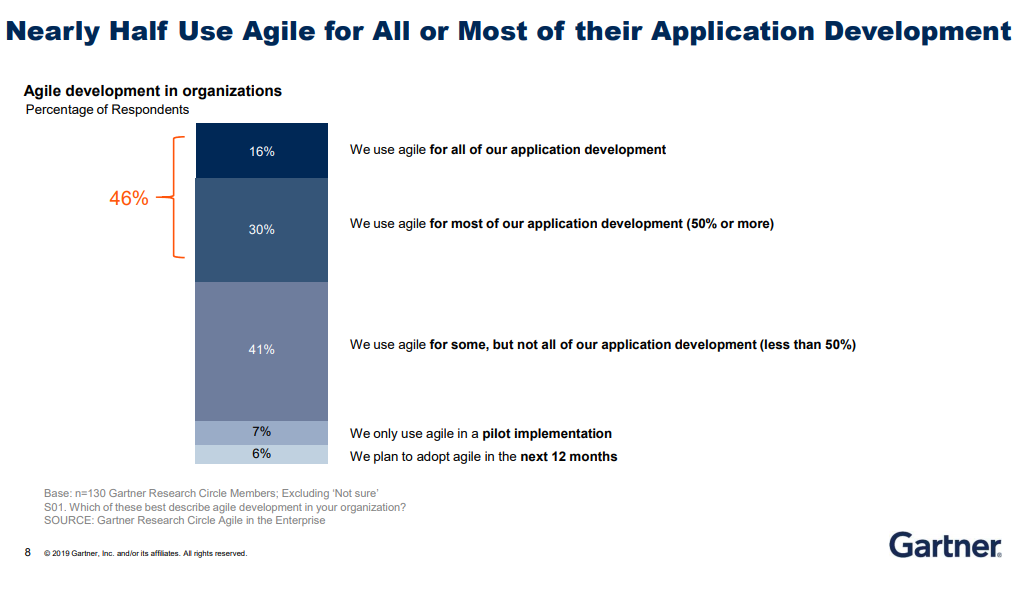
And with good reason. The Agile principles were invented to deal specifically with software development challenges.
- Focusing on shorter iterations over long-term planning lets you deal with the immediate future, which is easier to predict and manage.
- Working closely with end users and stakeholders ensures you don’t fall behind the market or miss the mark.
- Self-organized teams reduce the workload of your project manager while producing better software.
But for most teams, making the transition is hard. Luckily, Agile includes many frameworks that are perfect for any software project manager.
Let’s take a closer look at 3 of the best options.
Scrum
Scrum is one of the most popular frameworks for developing software. In 2020, 58% of Agile teams used Scrum for their projects.
The essence of Scrum is 4–11 member cross-functional teams that work on product increments in sprints that last 1–4 weeks.
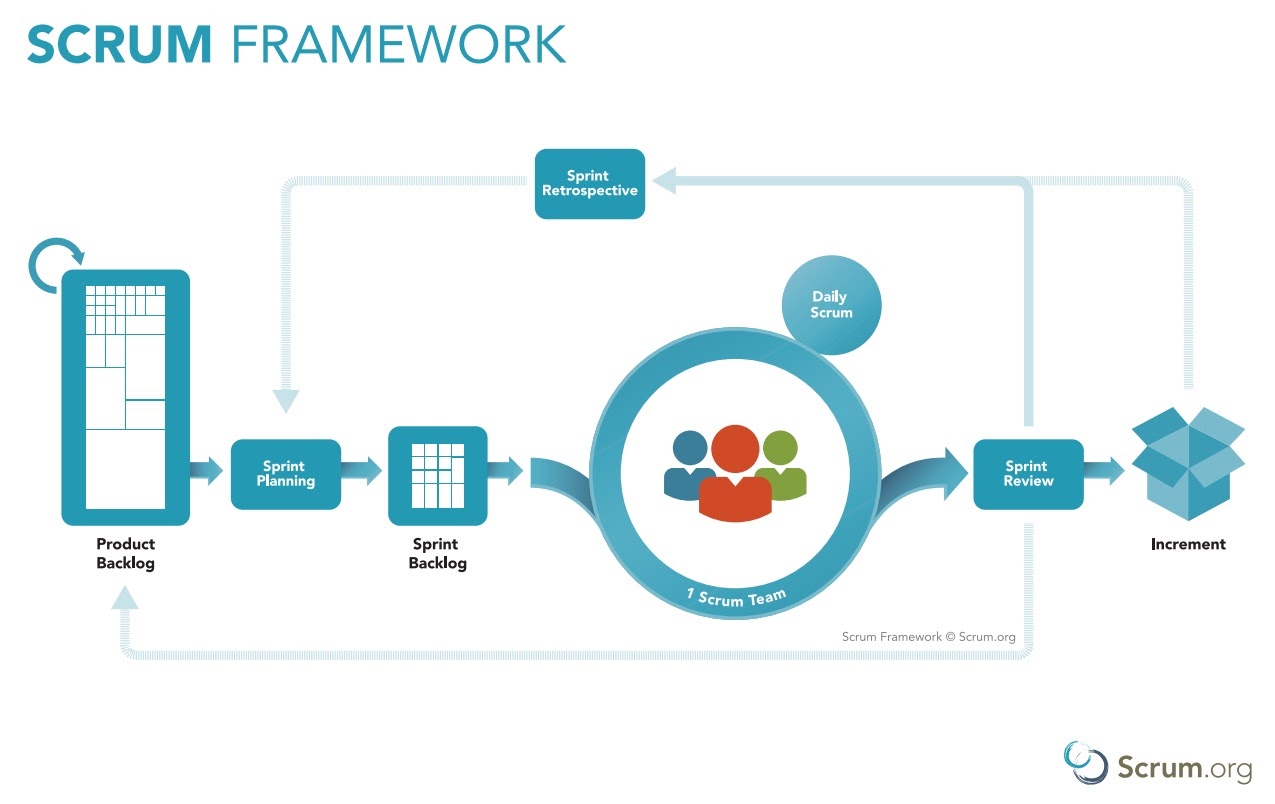
Rather than a detailed project plan, you add user-focused features, or “user stories,” to a product backlog.
Before each sprint, your team meets to sift through the product backlog and choose items to tackle. During a sprint, your team will meet briefly, typically in the morning, for a daily Scrum meeting.
The focus on speed and agility makes it perfect for a small software development team trying to create something new.
Kanban
Kanban is an Agile framework that focuses on continuous improvement over iteration-based development.
At the center of this method is a Kanban board with a few columns that represent your workflow.
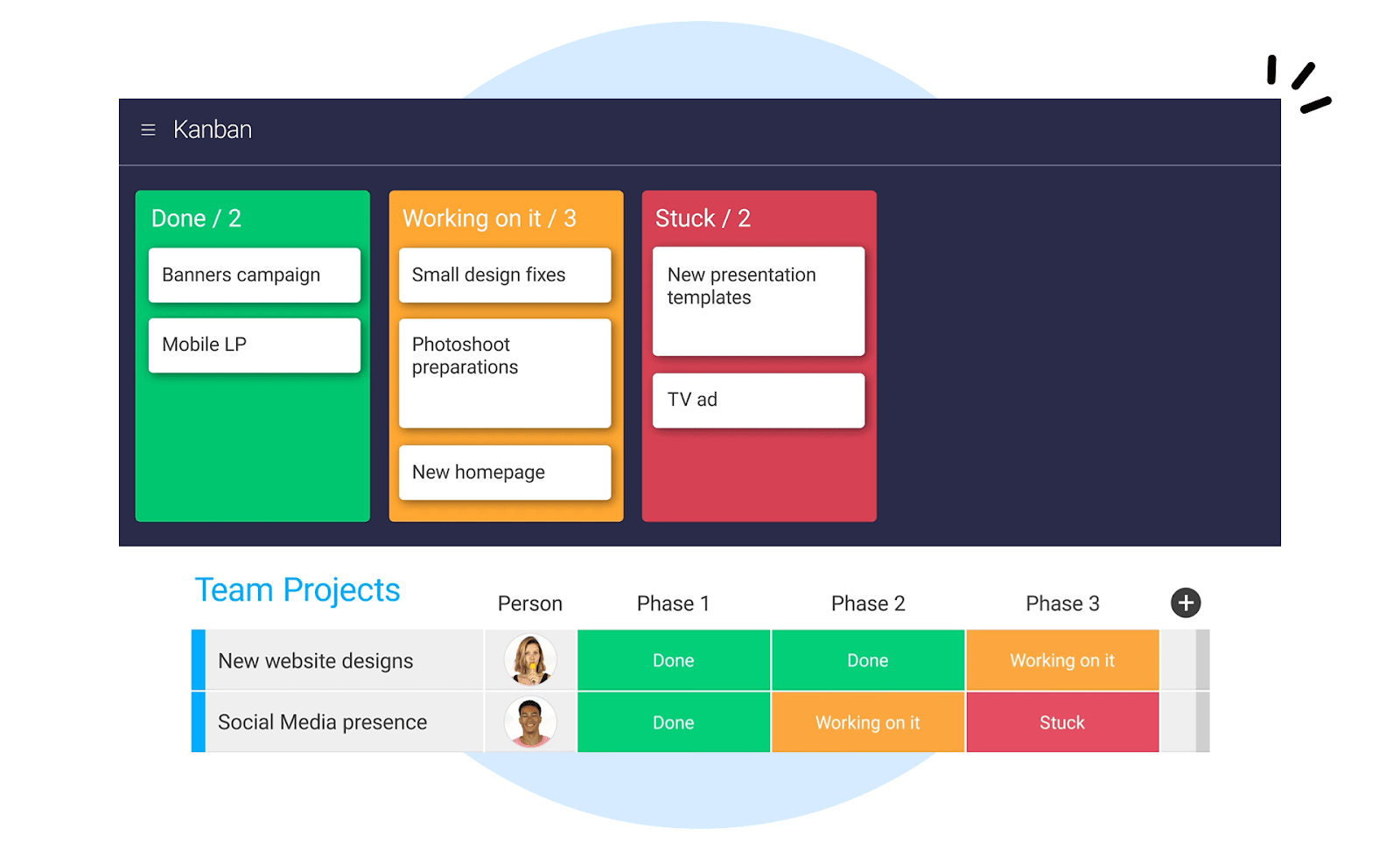
For example, they could be as simple as to do, work in progress, testing, and done. On this board, you add any incremental improvements you can make to the software.
You can then either assign every task, or let each team and software developer pick their own from the to-do column.
Kanban doesn’t limit the number of team members or prescribe any specific roles. Instead, you focus on improving team-wide collaboration and driving incremental improvements.
If you have a complex approval workflow and a large team, Kanban may be the better choice.
eXtreme Programming
eXtreme programming is a framework tailor-made for managing a software development project.
It includes coding concepts like pair programming, continuous integration, code standards, and more.
Like with Scrum, it also includes short daily meetings, and iterations that usually last 1–2 weeks.
It’s perfect for teams that not only want to improve their productivity but also their coding practices.
Best practices for software project management
If you want to perfect how you manage software projects, it’s not enough to just choose a framework.
Follow these best practices to take back control.
Respect the software development life cycle
Even if you use a framework, don’t lose sight of the software development life cycle (SDLC).
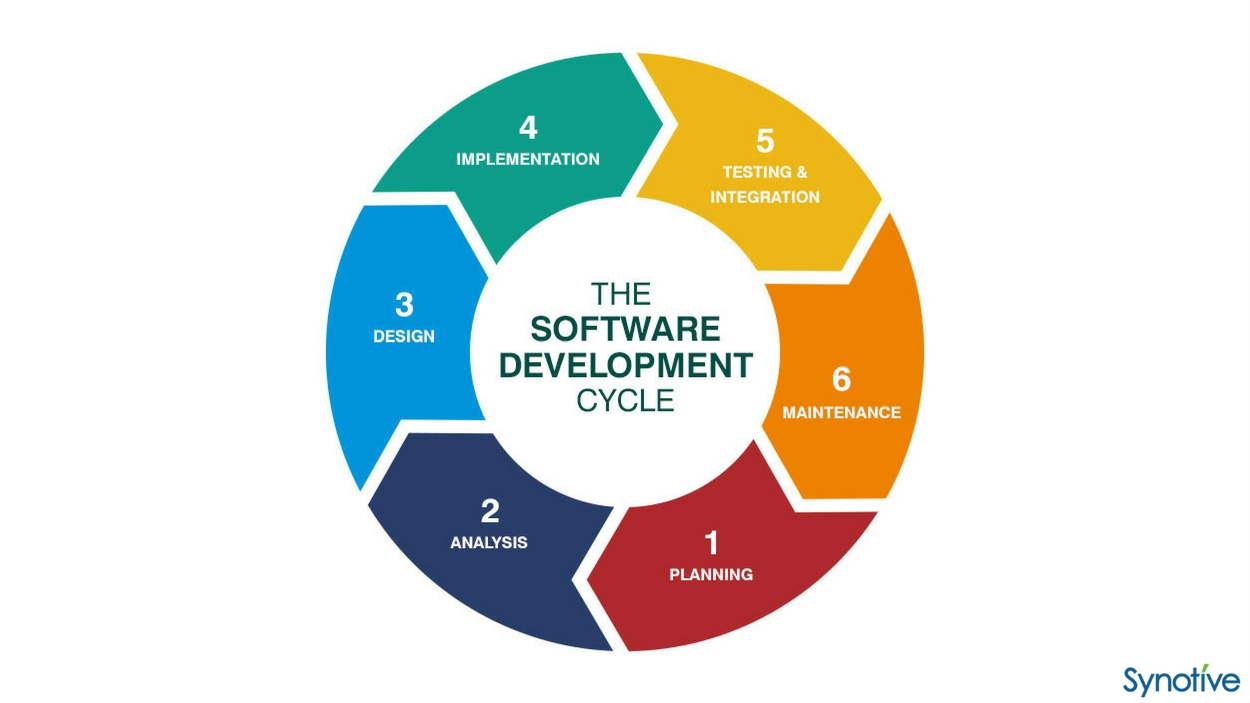
It outlines crucial stages, like testing, integration, and maintenance, that teams can overlook when focusing on speed.
Bug fixes are a lot more expensive after you’ve implemented them into your core software. Just like an actual bug infestation, it’s better to catch it early, before it takes over your whole house.
Involve stakeholders more throughout the project
It’s all too easy for the development team to put their blinders on to “get things done.” But that’s a bad idea. You wouldn’t want your contractor to renovate your kitchen while blindfolded, would you?Without real feedback from customers and internal users, that’s what your team is doing. They’re working blind.
Stakeholder involvement is one of the most crucial principles in Agile development. You need to remove the distance between the makers, customers, and businesspeople.
Check in more often
Don’t just assume that your team is doing fine and working efficiently.
The daily standup is the perfect tool here. In just 15 minutes, your team can outline their daily tasks, potential roadblocks, and everyone knows where they stand.
Choose the right software to transform how you manage software projects
Tailor-made project management software improves team performance on almost all fronts.
It makes your project more transparent, helps visualize everyone’s workload, and generally boosts productivity.
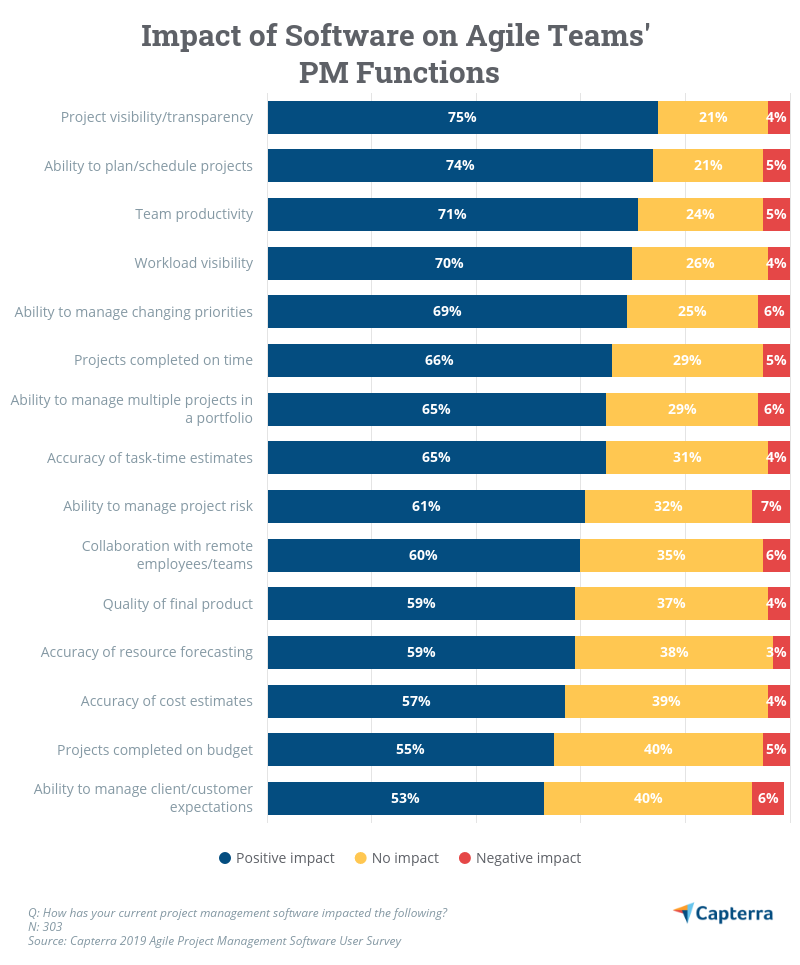
Standardize your methodology and processes
It’s not enough for one person to switch to Agile or adopt new software. Everyone needs to adopt the new framework and tools for it to make a difference.
Single out agents of change within each team, and hold workshops and give them time to learn during working hours.
They’ll become linchpins and help everyone else make the transition.
How to use monday.com to manage your next software project better
If you’re currently using a spreadsheet solution, or worse, none at all, it’s time you experienced the future.
Our digital workspace makes it a lot easier to manage software projects through every stage, from planning, to implementation, and even integration and maintenance.
Start with a roadmap
Our plug-and-play templates make it easy to get started, no matter which methodology you choose.
For example, you can follow our template to create a project roadmap for your latest project in minutes.
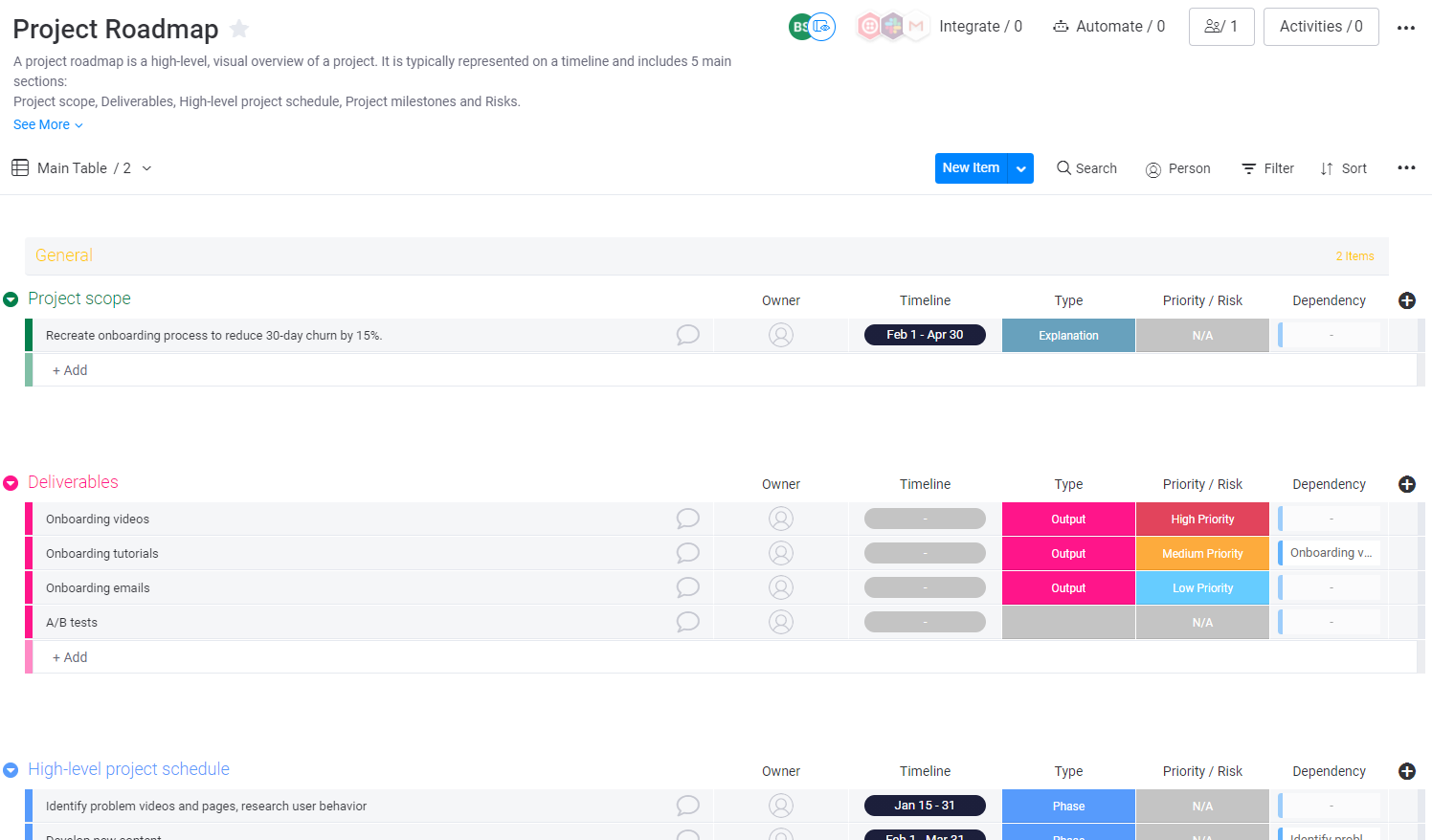
Complete with project scope, deliverables, risks, and more, it’s a great starting point.
Manage and engage your stakeholders better with a stakeholder register
So no stakeholder is left behind, all team members should have access to a stakeholder register.
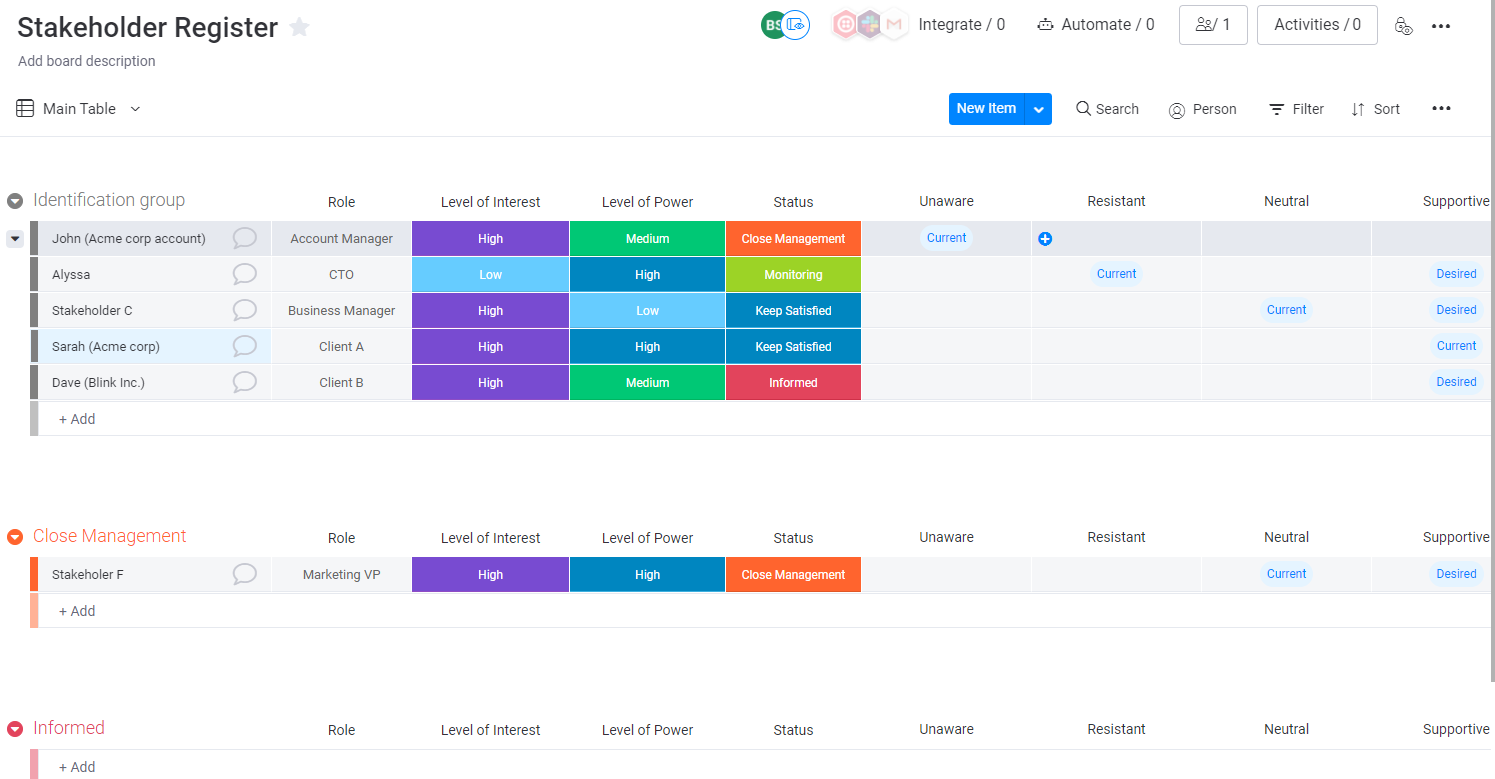
You can also outline how to contact them and which meetings you should invite which stakeholders to.
Use our integrations with Jira and other software development platforms
Our robust native integrations with Jira and other development platforms make monday.com the perfect ally for developers.
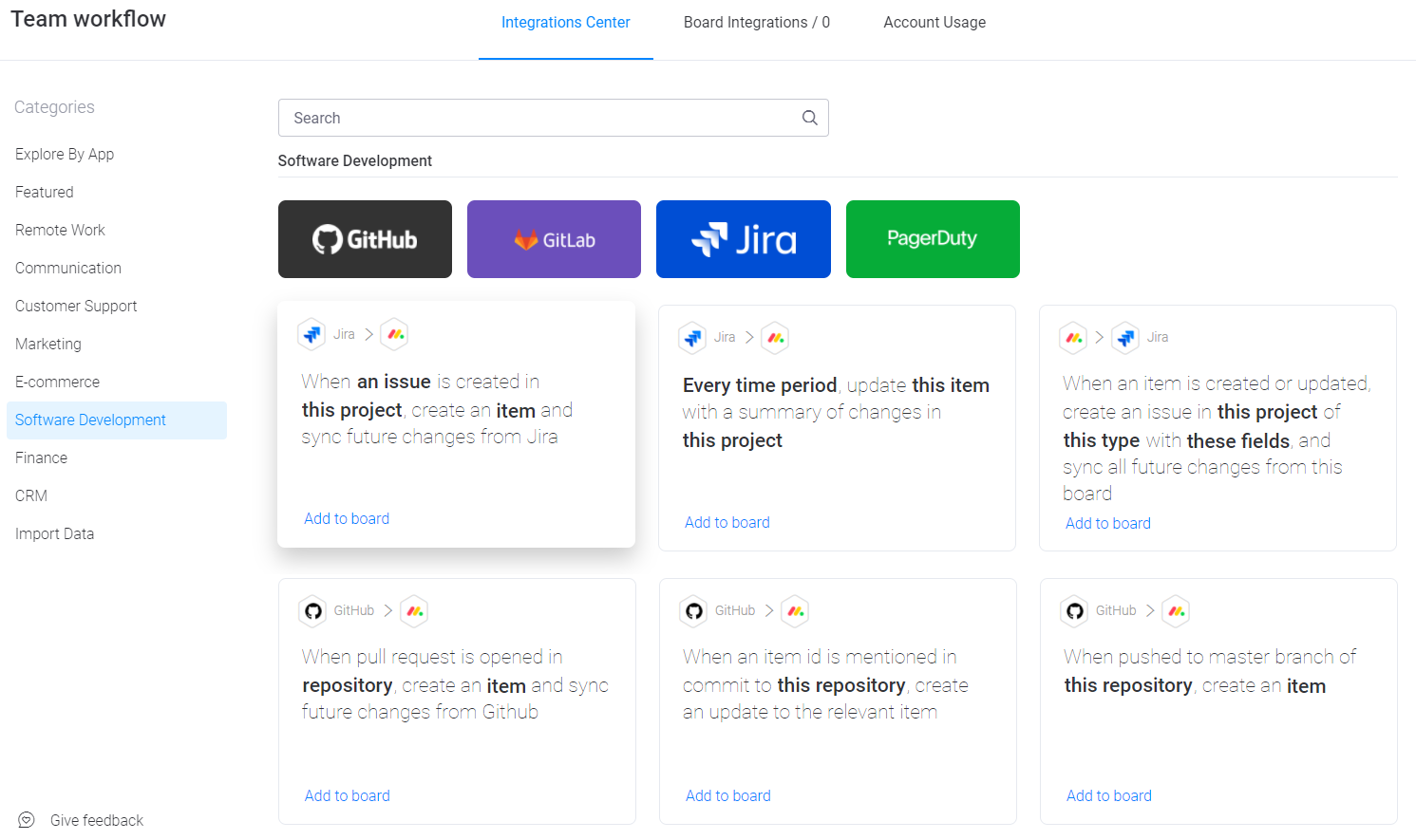
You can automatically create new items and synchronize changes based on issues in Jira, or automatically update work items based on changes.
Once you start to master our features, monday.com will make you feel like you have an extra manager on your team.
Manage your next software engineering project with ease
Project management in software engineering is different. There’s more unpredictability, faster testing cycles, no physical products or supply chain restrictions, and a unique set of risks.
That’s why many teams choose Agile to break down the larger projects.
You don’t need to implement a new framework wholesale. But including stakeholders more and working in shorter cycles keeps software projects on the right track over months and years.
Use our project roadmap template to start your next project on the right track.
Related: Project management industries, Project management for software development, Project management software for freelancers, Project management software for startups

